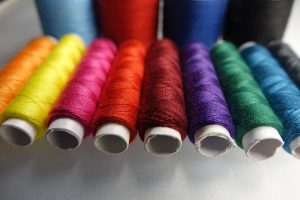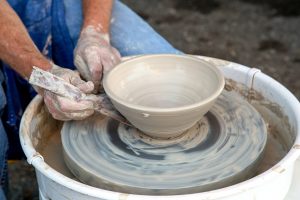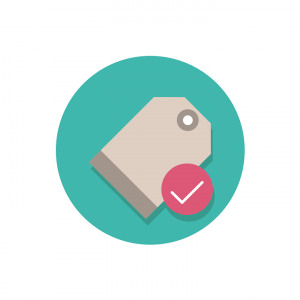Your handmade product is an expression of your craft, creativity and effort. Its value is linked not just to the product, but also how much your customer is willing to pay for it. In other words – the value that a customer places on a hand-crafted product, is something that’s a function of the value that YOU as a creator would first need to place on it.
Pricing is what drives the value of your product. And also the value of your business. It can make or break your business. If your prices are too low – you won’t make enough money to stay in business. You won’t be able to market your product. Customers will begin to perceive your products and brand as cheap and lacking in value.
If your pricing is neither high nor low – you will struggle to grow your business. As you will get caught up in a cycle of creating and selling to create and earn more – only to find yourself back in the rut of creating again with the same limited resources.
If your pricing is high – you will put off customers as they will not be seeing the value in the product that you want them to see.
We’re here to help you decode pricing strategies – if you’d like to build a long-term and sustainable business. Read our tips and tricks for getting your sweet spot pricing – every time.
The Pricing Formula
Experts and veterans swear by this simple formula
Raw Material + Labour + Overhead Expenses + Profit = Wholesale Price
Wholesale Price x 2 = Retail Price
We now show you how to work this formula like a pro. Every single time.
Raw Material Costs
 You need to take into account all your raw material costs. Do not forget small components such as buttons. Nor the big stuff like, say – cost of packing material. If you are making estimations about input costs – it’s better to keep them on the higher than on the lower side.
You need to take into account all your raw material costs. Do not forget small components such as buttons. Nor the big stuff like, say – cost of packing material. If you are making estimations about input costs – it’s better to keep them on the higher than on the lower side.
Labour Costs
 Think about how much would you pay someone a fair price for the work they would do to physically create your product. Do some research if necessary. Figure out a per hour cost and then multiply that by the number of hours needed to create one unit or piece of your product. You may also want to take into account your charges for designing, marketing, selling, packaging and dispatching the product, too. It is your time and effort after all.
Think about how much would you pay someone a fair price for the work they would do to physically create your product. Do some research if necessary. Figure out a per hour cost and then multiply that by the number of hours needed to create one unit or piece of your product. You may also want to take into account your charges for designing, marketing, selling, packaging and dispatching the product, too. It is your time and effort after all.
Overhead Expenses
 Anything and everything that is not included in raw material costs needs to be taken into account here. Conveyance, electricity, water, internet, logistics, World Art Community fees and charges – the total amount or part of the amount would be included under your overhead expenses. And become part of your total product pricing.
Anything and everything that is not included in raw material costs needs to be taken into account here. Conveyance, electricity, water, internet, logistics, World Art Community fees and charges – the total amount or part of the amount would be included under your overhead expenses. And become part of your total product pricing.
For that you’ll need to track and record every monthly expense you can think of. Then – figure out how many items you’d like to sell a month. Divide the expense number by the number of items to get a per unit overhead expense figure.
Your Profit
 Before deciding on a profit number – step back for a minute and think. What do you want from your artistic business ? What do you want to achieve ? Do you want to quit your day job ? Or is this going to be a part-time hobby ? Also keep in mind what would your final wholesale pricing work out to once you include your profit figure – and then evaluate the number.
Before deciding on a profit number – step back for a minute and think. What do you want from your artistic business ? What do you want to achieve ? Do you want to quit your day job ? Or is this going to be a part-time hobby ? Also keep in mind what would your final wholesale pricing work out to once you include your profit figure – and then evaluate the number.
Once you’ve got all these numbers in place – you’ve arrived at your wholesale price. You may get tempted to sell at your wholesale price – since it seems affordable and you’ve in any case accounted for your expenses and profit, right ? Wrong.
Those in the know will advise you to double your wholesale price to arrive at your true retail price. Simply because selling your work at wholesale price – undervalues those who price their work at the proper retail price. Just think – when the majority of sellers in a category price their work thoughtfully, the entire category would benefit – wouldn’t it ?
Then your customers may think as to why your stuff priced lower than everyone else? Is it because it’s not handmade? Or is it because you’re using cheaper raw materials? Too low a price will send out a wrong impression – so let’s ensure you make a great impression !
Follow World Art Community Pricing Guidelines
 Pricing must be for only the item being listed. Clearly mention that any accessories or props are not part of the product being sold. If you’re charging shipping costs separately from the price, ensure that it’s kept at a reasonable figure. Customised products must factor in any customisation charges if applicable. If there are variants in a product that affect pricing, such as different sizes, colours, designs, styles – each variation must have its pricing clearly specified.
Pricing must be for only the item being listed. Clearly mention that any accessories or props are not part of the product being sold. If you’re charging shipping costs separately from the price, ensure that it’s kept at a reasonable figure. Customised products must factor in any customisation charges if applicable. If there are variants in a product that affect pricing, such as different sizes, colours, designs, styles – each variation must have its pricing clearly specified.
Understand how your Target Customer thinks
 You may possibly know what you would pay for the products you make if someone else were selling them. However – you may not be similar to people who will actually buy them. If you can identify which customers are willing to pay more for your handcrafted products, you can price your items in a range they’re willing to pay for and from which you can recover your expenses plus make a profit.
You may possibly know what you would pay for the products you make if someone else were selling them. However – you may not be similar to people who will actually buy them. If you can identify which customers are willing to pay more for your handcrafted products, you can price your items in a range they’re willing to pay for and from which you can recover your expenses plus make a profit.
Once you’ve identified your target customers, you’ll need to market your products effectively to those customers – in order to justify your pricing in their minds. You can write polished product descriptions that describe your creative process and design, or raw material that went into making of the product, or you can share what makes it one-of-a-kind and how they’ll feel special or be different – if they own one.
Check out Competition
 Research competitive pricing. See how other, more experienced, World Art Community sellers with similar items price their products. If their costs look significantly lower, try lowering your costs in producing the item or use your product descriptions to justify pricing that’s higher than your competitors.
Research competitive pricing. See how other, more experienced, World Art Community sellers with similar items price their products. If their costs look significantly lower, try lowering your costs in producing the item or use your product descriptions to justify pricing that’s higher than your competitors.
You can also use prices of mass-market versions of your items as a benchmark above which you can price your handmade versions.
Follow the regulatory framework
Bringing your creations to the consumers comes with compliance requirements. While they may appear cumbersome in the beginning but in the long run, it’s beneficial for both you as a seller and the customers. We’d particularly draw your attention to the Legal Metrology (Packaged Commodities) Rules, 2011 (Rules), and the amendments announced effective from 1 January, 2018. To curb dual MRP issue, a
provision has been inserted that no person shall declare different MRPs on an identical pre-packed commodity. Make sure you keep the MRP uniform and declare the same on the packaging.
It has also been clarified that the retail sale price of the package shall be the maximum retail price inclusive of all taxes and the price to be rounded off to the nearest rupee or 50 paise. Discounts if any offered should be over the MRP only. Also note that it’s mandatory to indicate retail sale price, net quantity, your name and address, name of the commodity, dimensions of product and grievance redressal procedure on all packaged goods.
If you’re still stuck or have a specific question – our business and seller support teams would be delighted to help. Drop them an e mail at seller@worldartcommunity.com
Happy Selling!
